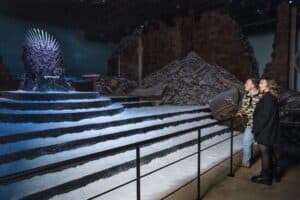You’ve heard it a hundred times. You’ve felt that instant sense of nostalgia from its words. You’ve sang it at midnight at the start of a new year. But where did the Auld Lang Syne come from? What does it mean? And why has this Scottish tradition become such a household custom throughout the world? Scotland is a magical place to visit at any time – especially during Christmas and New Year’s Eve. Traditions like this only enhance its appeal and are, without a doubt, a big reason many people flock there this time of year.

In order to get an understanding of the song’s origin, it’s important to note Robert Burns. While he didn’t necessarily write the poem itself, he was the first to write it down lyric for lyric. In 1788, Burns sent a copy of the poem to a friend in 1788. Within the letter to his friend, Burns wrote, ‘There is more of the fire of a native genius in it than in half a dozen of modern English Bacchananalians!’ Five years later, Burns sent the poem to James Johnson who was putting together a book of old Scottish songs. Burns stressed in his letter to Johnson how the song had never been in print. Sadly, he would be dead before the book was published in 1796 with Auld Lang Syne included.
Just as the true origin of its lyrics is mystery, even less is known about the source of Auld Lang Syne’soriginal tune. The one most commonly heard today is quite different from the initial version. To get a good idea of what it’s like, you’ll find it featured in the New Year’s Eve scene of 2008’s Sex and the City movie. You also get a good feel of the original tune when you hear Northern Irish singer Keith Harkin’s cover. The original version of the song has a far more folk sound with quite the bittersweet ring to it. ‘Auld Lang Syne’ translates to ‘to old time’s sake’. It seems quite fitting to learn the lyrics are about preserving old friendships and looking back on events of the old year.
So what happened between 1796 and 2016 to make this a song we sing all over the world today? Well, on New Year’s Eve in 1929, bandleader Guy Lombardo chose to play ‘Auld Lang Syne’ just after midnight. The song was used as transitional music while they performed at the Roosevelt Hotel during New York City’s New Year’s Eve broadcast. Thousands of people heard it play over radio and television airwaves. And the rest, as they say, is history.
Journey to Scotland and you’ll find ‘Auld Lang Syne’ played right before midnight. During Hogmanay celebrations, attendees stand around in a circle holding hands. Once they get to the verse ‘And there’s a hand, my trusty friend’, Scots angle their arms across their bodies. If you wish to join them, move your left hand to hold that of the person on your right. Do the same thing with your right hand and the person on your left. As the song ends, rush to the middle of the circle holding hands and laughing with everyone else.
If you’re not in Scotland, chances are you’ll still hear ‘Auld Lang Syne’ on New Year’s Eve. It is also played at funerals, various celebrations – even as a warning sign that stores are closing in Japan. Auld Lang Syne has come a long way since its appearance via Robert Burns. Its iconic symbolism and beautiful meaning are the perfect way to welcome a fresh start and a clean slate. And it’s why we happily sing the tune each year, raise our glasses and toast to new beginnings.





